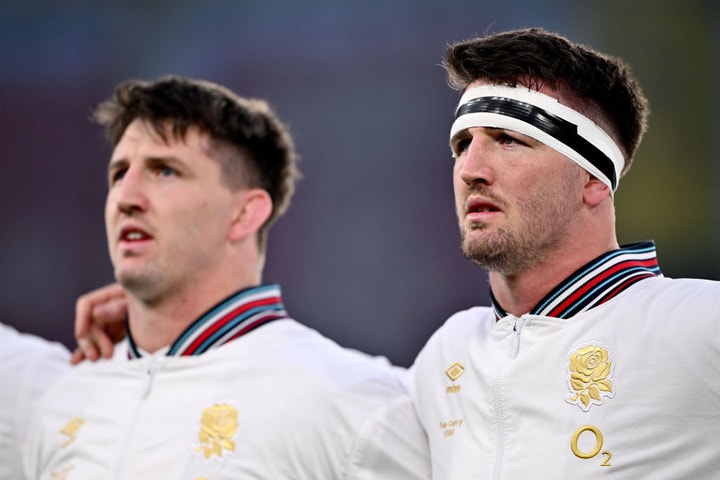Whilst the painting shows England players on the attack, halted
by the Scottish defence, the match was characterised by quite the
opposite: frequent attacks from the Scottish backs were met by
strong English defence. The result was a scoreless draw - Scotland
had a try disallowed but did force England to touch down twice in
defence. 12,000 spectators came to watch and mounted police were
used to control the crowd for the first time at a Scotland game -
they can be seen in the background of the painting. We do not know
who commissioned the original painting and why they chose to record
this particular match, but the subject matter certainly afforded
action and movement to interest the maritime painter as well as
scenery that would have appealed to a landscape artist, with views
of Edinburgh in the distance.
We asked Oliver why he decided to commission a copy of the
painting:
'I always thought it was a wonderful painting. Being an
ex-player and now a collector of antique rugby art, I was
interested in purchasing a lithograph of the original - but it
became apparent that even these were non-existent. I learnt that
the original had been lost in the late-nineteenth century and it
was last seen in a public exhibition in Paris.'
Overend and Smythe's painting was exhibited at the Exposition
Universelle in Paris in 1889, where it caused quite a stir.
Newspapers widely reported the impact the painting had on Parisian
viewers:
One of the most popular of the English pictures at the Paris
Exhibition is the representation of a Rugby football match by
Messrs Overend and Smythe, lent by the Fine Art Society. The
Parisians, it is said, stand in front of it awestruck. They shrug
their shoulders, and discuss the raison d'être of the game in the
most excited fashion, and go away with their opinion of the
queerness and madness of the British seven times stronger than
before. - Nottingham Evening Post, 30th May 1889
Its appearance at the exhibition appears to have captured the
imagination of the Parisian public. It is possible that the image
made a new audience aware of the game, stimulating interest in the
sport during its formative years in France. Although rugby had been
played in the country as early as 1862, these early matches were
often organised by and for English expats - it was not until the
1880s and 1890s that Parisian college students began to set up
their own rugby clubs. Despite the painting's popularity at the
Paris Exhibition, there is no record of its sale and now its
whereabouts are unknown.
Oliver was struck by the role the image could have played in
popularising rugby in France:
'It has inspired so many to take up the sport - in the UK,
France and the rest of the world. It's one of the most well-known
rugby paintings ever created. I believed it was important to
commission a copy, to bring it back to life again, so not only I
but all the rugby fans who visit the World Rugby Museum can see it
and learn its history.'
He wanted the copy to be as similar to the original as possible
and set about finding a suitable artist:
'It was essential that the artist had experience of sports
scenes and was able to replicate the exact style of an artist like
William Overend. I came across one of the leading UK sports
artists, Robert Highton, who not only matched those criteria but,
by coincidence, had been studying Overend's painting style for
another project of his.'







